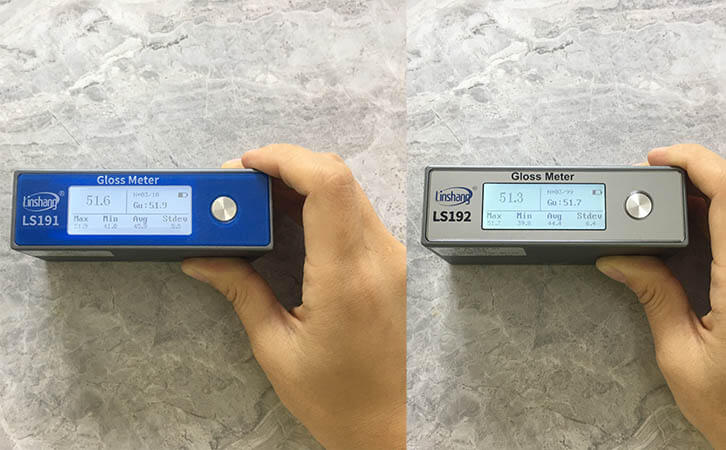Factors Affecting the Gloss of Ceramics and Choice of Glossmeter
Ceramic gloss is very important for ceramics, because the gloss of ceramics is the soul of ceramics. The gloss of ceramics directly affects the appearance quality of porcelain. The appearance of ceramics generally has a layer of enamel. Ceramic gloss is a characteristic of porcelain appearance. Tiles are most widely used in the decoration industry.
1. Optical theory of ceramic gloss
We know that the surface of ceramics generally has a layer of enamel. The enamel has a certain reflective ability, which is what we call the reflective ability of the mirror. The half of the gloss value of the glaze has a great relationship with the refractive index of the surface. The higher the refractive index, the higher the gloss value of the ceramic. The lower the refractive index, the lower the gloss value of the ceramic.
In addition to the refractive index, the enamel gloss value has a great relationship with the embryo body. Enamel dissolves and diffuses on the surface of the embryo. Therefore, the pattern and ripple on the embryo body surface will cause resistance to the dissolution of the enamel on the surface of the embryo body. It will affect the flatness of the enamel on the surface of the embryo body. When the ceramic surface is uneven, light will become diffuse reflection or scattering on the ceramic surface. This will indirectly affect the ceramic gloss.
2. Classification of ceramics
Ceramic tiles can be divided into five categories (divided by water absorption rate): porcelain tiles, ceramic tiles, concrete tiles, fine concrete tiles. Ceramic tiles with a water absorption rate of more than 10% are generally called interior wall tiles in the market. They are widely used for wall decoration of residential buildings, hotels, restaurants and public places. They are the main products for interior decoration. Porcelain bricks with water absorption less than 0.5%, also known as vitrified bricks, are mostly used for interior decoration. Most of the flooring is surface polished, so it is also called polished brick.
Porcelain brick structure is rough and porous. The sound of percussion is low-key and unpleasant, while the structure of porcelain brick is compact and exquisite, with good appearance gloss and certain transparency. In terms of hardness and strength, ceramic tiles are not as strong and wear-resistant as porcelain tiles.
In terms of gloss, professionals use LS191 ceramic glossmeter to measure. The polished surface of porcelain tiles will have a higher gloss than that of ceramic tiles. Generally, the gloss of polished tiles is between 50-70GU.
3. How to choose the right glossmeter?
In fact, there are many types of gloss, but they are mainly divided into three types: high gloss, medium gloss and low gloss. The glossmeter is also divided into a variety of angles, usually 20 degrees, 45 degrees, 60 degrees and 85 degrees. Gloss meters with different measurement angles are mainly used in different industries. But among all gloss measuring instruments, the 60-degree glossmeter is the most widely used.
In the use of the glossmeter, a 60-degree angle glossmeter is usually used to determine whether the measured material is high gloss or low gloss. If it is low gloss, an 85 degree angle gloss meter is used. If it is high gloss, 20 degrees glossmeter can be used. For ceramic gloss measurement, we can use Linshang LS191 and LS192 glossmeters. Both of these gloss instruments are 60-degree angle gloss instruments. After being turned on and self-calibrated, ceramic gloss values can be measured immediately. It is also equipped with software to print the measurement report, making the measurement simple and convenient.
